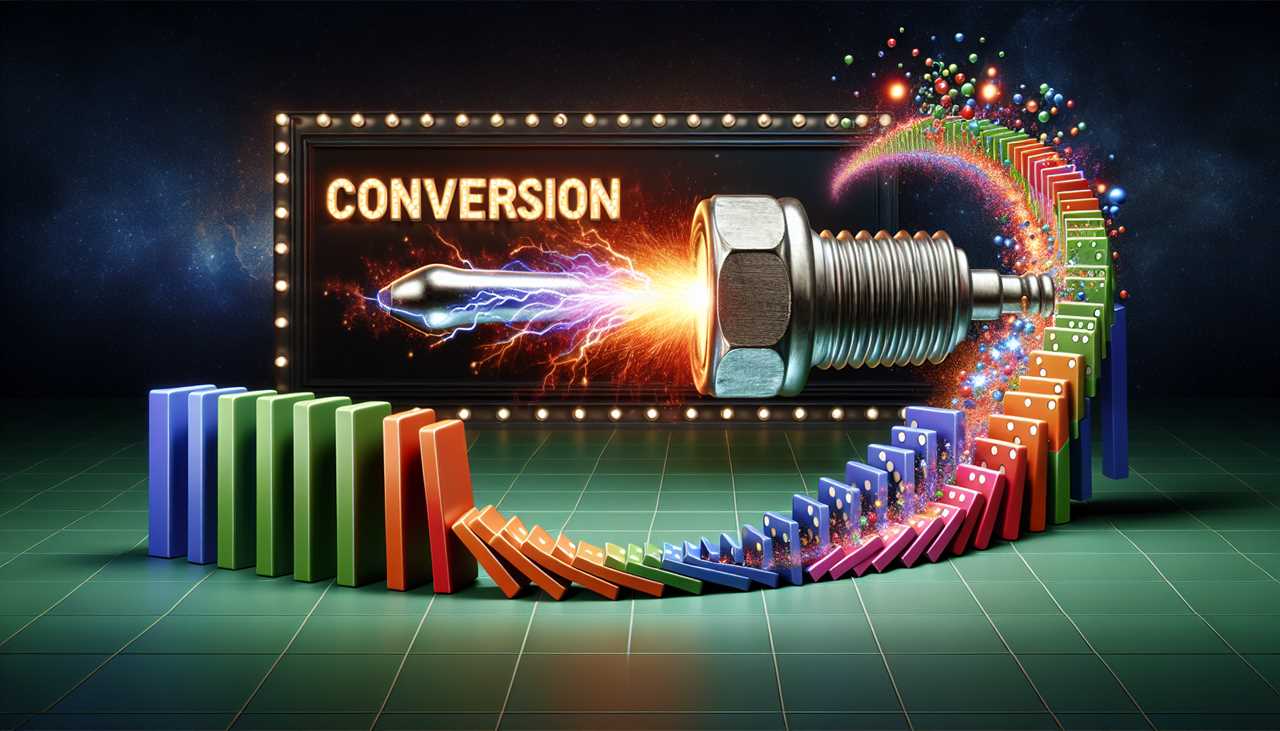Entertainment
Ignite Action: Crafting Irresistible Triggers That Spark Conversion
Calls-to-action (CTAs) are critical in prompting immediate engagement from users in the fast-paced digital environment. A successful CTA combines clarity,

We’ve all been there. You’re browsing a website, reading an article, or scrolling through social media when suddenly, you come across a message that compels you to take immediate action. That’s the power of a well-crafted call-to-action (CTA). In today’s digital landscape, where attention spans are shorter than ever, mastering the art of creating persuasive CTAs is crucial for businesses looking to drive engagement and boost conversions.
The Anatomy of a Compelling Call-to-Action
A truly effective CTA is more than just a button or a link. It’s a carefully crafted message that motivates your audience to take a specific action. Whether you want them to sign up for a newsletter, make a purchase, or download a free resource, your CTA should be clear, concise, and impossible to ignore.
To create a CTA that truly resonates with your audience, consider these key elements:
1. Clarity: Your CTA should leave no room for confusion. Use straightforward language that clearly communicates what you want the user to do.
2. Urgency: Create a sense of immediacy by using time-sensitive language or limited-time offers.
3. Value proposition: Highlight the benefits of taking action. What will the user gain by clicking your CTA?
4. Visual appeal: Use contrasting colors, bold fonts, and strategic placement to make your CTA stand out.
5. Action-oriented language: Start with a strong verb that encourages immediate action, such as “Get,” “Start,” or “Join.”
Triggering Emotional Responses
The most powerful CTAs tap into human emotions. By understanding your audience’s desires, fears, and motivations, you can craft messages that resonate on a deeper level. Here are some emotional triggers that can spark action:
1. Fear of missing out (FOMO): Create a sense of scarcity or exclusivity to motivate users to act quickly.
2. Curiosity: Pique interest by hinting at valuable information or solutions that await on the other side of the CTA.
3. Desire for belonging: Appeal to the human need for community and connection.
4. Aspiration: Tap into your audience’s dreams and goals, positioning your offer as a step towards achieving them.
5. Trust: Use social proof, testimonials, or authority figures to build credibility and reduce hesitation.
Tailoring Your CTA to the Customer Journey
Not all CTAs are created equal. The most effective ones are tailored to specific stages of the customer journey. Consider these examples:
1. Awareness stage: “Learn More” or “Discover How”
2. Consideration stage: “Get a Free Trial” or “Compare Plans”
3. Decision stage: “Buy Now” or “Start Your Subscription”
By aligning your CTA with the user’s current mindset and needs, you’ll increase the likelihood of conversion.
The Power of Personalization
In today’s data-driven world, personalization is key to creating truly compelling CTAs. Use the information you have about your audience to craft messages that speak directly to their interests and pain points. This might include:
1. Geographic targeting: “Find Deals in [User’s City]”
2. Behavioral targeting: “Continue Where You Left Off”
3. Interest-based targeting: “Explore More [Topic] Content”
Personalized CTAs have been shown to perform significantly better than generic ones, with some studies reporting conversion rate increases of up to 202%.
Testing and Optimizing Your CTAs
Creating the perfect CTA is an ongoing process of testing and refinement. A/B testing allows you to compare different versions of your CTA to see which performs best. Some elements you might want to test include:
1. Button color and size
2. CTA copy and phrasing
3. Placement on the page
4. Surrounding design elements
Remember, what works for one audience or campaign might not work for another. Continuous testing and optimization are crucial for long-term success.
Avoiding Common CTA Pitfalls
While crafting your CTAs, be mindful of these common mistakes:
1. Using vague or generic language
2. Overloading the user with too many options
3. Neglecting mobile optimization
4. Failing to create a sense of urgency
5. Misaligning your CTA with the surrounding content
By avoiding these pitfalls, you’ll create more focused, effective CTAs that drive real results.
Measuring CTA Success
To truly understand the impact of your CTAs, you need to track the right metrics. Some key performance indicators (KPIs) to monitor include:
1. Click-through rate (CTR)
2. Conversion rate
3. Cost per click (CPC)
4. Return on investment (ROI)
By analyzing these metrics, you can gain valuable insights into what’s working and what needs improvement in your CTA strategy.
The Future of CTAs: Interactive and AI-Driven
As technology continues to evolve, so too will the nature of CTAs. We’re already seeing the emergence of interactive CTAs that respond to user behavior in real-time. AI-driven CTAs that dynamically adjust based on individual user preferences and browsing history are also on the horizon.
These advancements promise to make CTAs even more personalized and effective, further blurring the line between marketing and user experience.
In conclusion, mastering the art of crafting compelling CTAs is essential for any business looking to thrive in the digital age. By understanding the psychology behind effective triggers, tailoring your approach to the customer journey, and continuously testing and optimizing your efforts, you can create CTAs that not only capture attention but drive meaningful action and results.
Remember, a great CTA is more than just a button or a link – it’s an invitation to engage, an opportunity to provide value, and a crucial step in building lasting relationships with your audience. So go forth and craft those irresistible triggers that will spark conversions and ignite your business’s success.

Hey there! I’m William Cooper, your go-to guy for all things travel at iMagazineDaily. I’m 39, living the dream in Oshkosh, WI, and I can’t get enough of exploring every corner of this amazing world. I’ve got this awesome gig where I blog about my travel escapades, and let me tell you, it’s never a dull moment! When I’m not busy typing away or editing some cool content, I’m out there in the city, living it up and tasting every crazy delicious thing I can find. Join me on this wild ride of adventures and stories, right here at iMagazineDaily. Trust me, it’s going to be a blast! 🌍✈️🍴







You must be logged in to post a comment Login